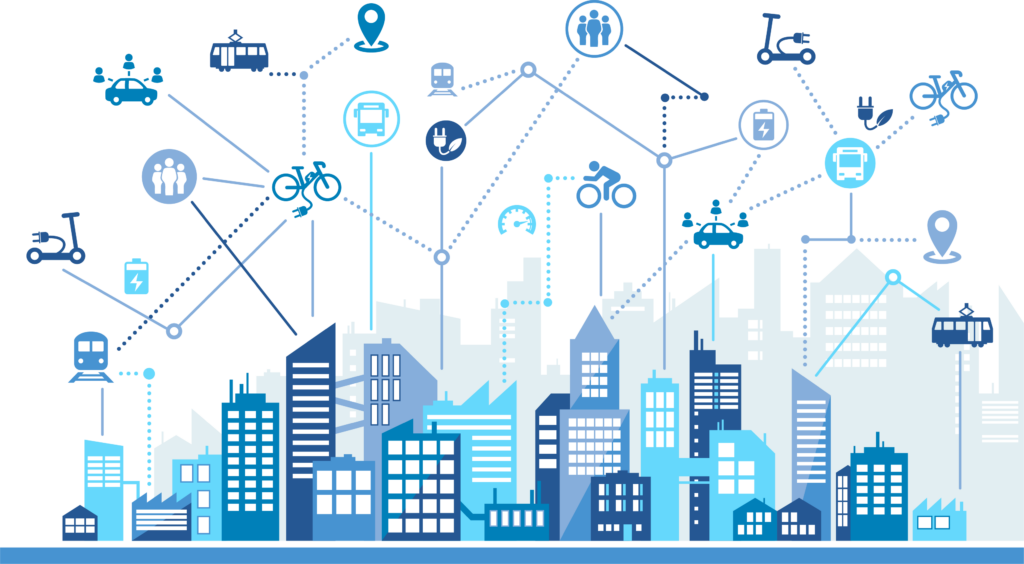
If the high-priced used car market has you considering cashing in, here are some suggestions for living car-free in Ann Arbor. It might be easier than you’d think to capture the savings and lower environmental impact thanks to the mobility innovations taking place in the region.

According to the Bureau of Labor Statistics, used car and truck prices have gone up 37 percent over the last year. New cars have similarly increased to an average of $47,077 according to Money.com. While adding a car to their garage has become increasingly expensive, many Ann Arbor area residents have wondered if they can capitalize on the soaring values by selling a potentially less utilized asset — freeing capital for more timely applications.
But is going car-free a dream of only urbanites and remote workers? New technologies being commercialized in the Ann Arbor region may open possibilities to a greater swath of the populace by connecting modes of public transit and reducing the frequency of trips needed in daily life.
Getting Around Downtown
Downtown Ann Arbor has become a web of interconnected transportation modes including Spin electric scooters, pedestrian-friendly streetscapes, and bike lanes — including newly constructed protected bike lanes. Additionally, a new way of moving around downtown Ann Arbor was launched last year: A2GO. You may have seen one of its four autonomous Lexus shuttles ferrying passengers. This is a free service as part of an effort between the University of Michigan’s Mcity, Ann Arbor SPARK, Prentice 4M, and !Important Safety. To hail a shuttle, download the May Mobility app or dial 734.800.4608.
With the addition of car-sharing platforms like ZipCar and Turo, irregular errands and regional journeys — like enjoying a state park — are accessible from downtown. But what if you just want to zip from point A to B? Nimbus, another Ann Arbor startup is building more nimble vehicles that do not take up the footprint (literal or carbon) of a car. So, it is safe to say that downtown residents are currently able to work and play without a permanent car without adverse effects.
Connecting to the Region
But what about the rest of us? The University of Michigan (U-M) bus service and The Ride by AAATA connect campuses and neighborhoods to the urban cores. According to AAATA, 63 percent of the area’s population and 82 percent of jobs are within 15 minutes of high-frequency bus service. Demonstrating its recognition as a forward-thinking body, AAATA is considering implementing bus rapid transit technologies on key corridors which would drastically improve speed, reliability, and comfort of bus service of these most impactful routes. The D2A2 service (connecting Ann Arbor and Detroit), Michigan Flyer (connecting to Detroit Metro airport), and Amtrak (connecting Ann Arbor to Detroit and Chicago) are all ways to access the wider region.
Another great resource is the AARP Rider50+ Platform powered by Feonix Mobility. It can help you find and book transportation providers that will take you to appointments, work, shopping, and more within Washtenaw County.
One other regional connector is the Border-to-Border (B2B) non-motorized trail. It is 35 miles of paved, ADA-accessible pathway connecting Washtenaw County communities, including downtowns and college campuses. It is a great option for walkers and bikers.
Delivery Options
Making trips more efficient through multi-modal transit and an array of options is only half the equation for reducing reliance on personal automobiles. Another key component is reducing the number of trips needed by a resident. For example, robotic delivery to replace some errands. Refraction.ai had been operating their REF-1 last-mile logistics robot on the streets and neighborhoods of Ann Arbor. Yandex also deployed their autonomous delivery robot to serve U-M’s campus with Grubhub food delivery. Domino’s is also partnering with a third autonomous delivery company, Nuro, to bring hot pizzas to customers’ doors in Houston, and Ann Arbor could be next. It is likely that even more will follow the lead of these companies.
Carless Future
As more trips become automated, more cars become shared, and more transit options become available, it might make sense to capture the best resale value in a generation for your car. Fortunately, the Ann Arbor area has the mobility infrastructure and innovation in place to make the transition smooth with a bright horizon.